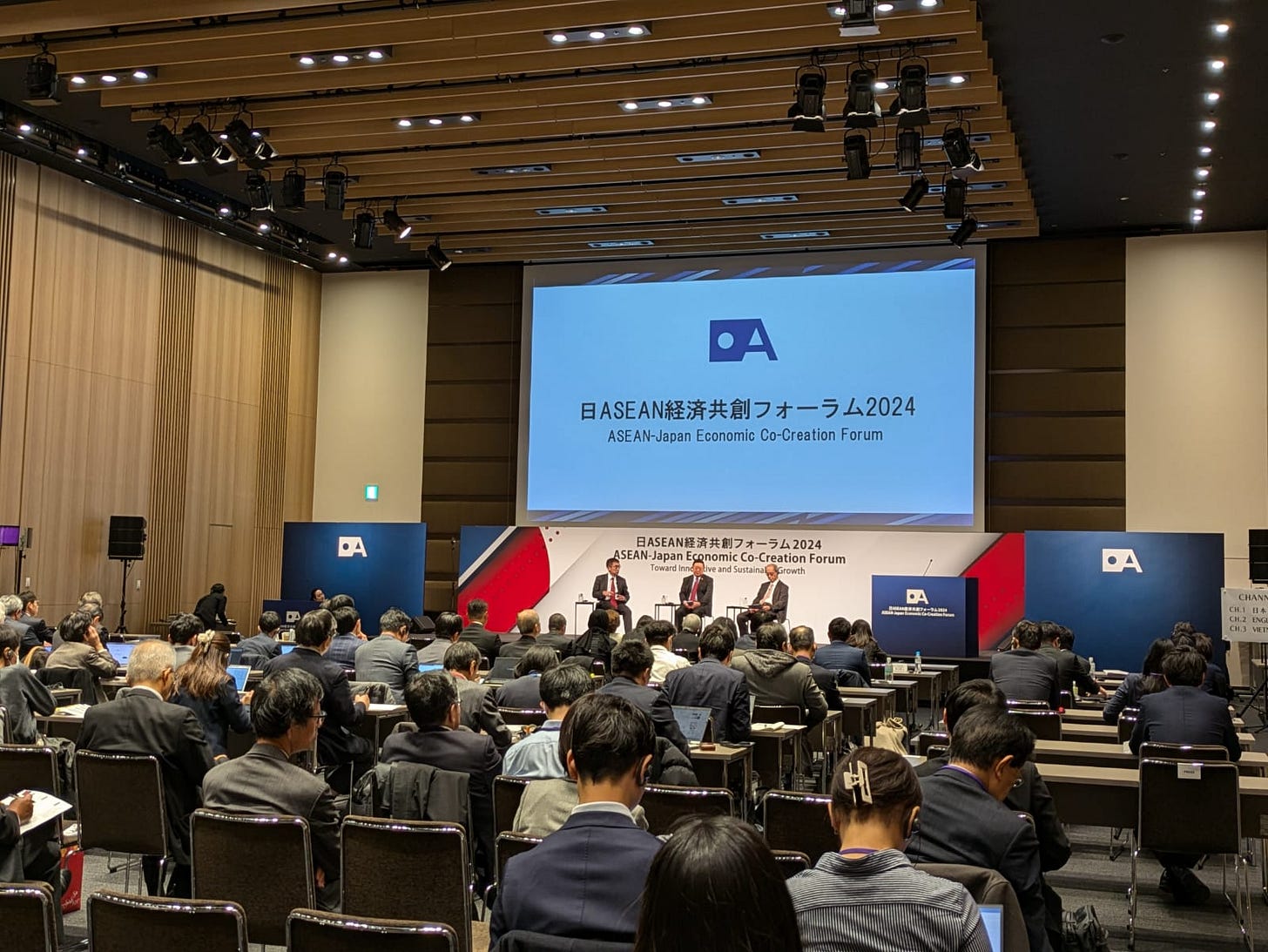Quad Shadow in Active ASEAN Japan Month And Co-Creation Meet
Plus new year summit; nuclear talent race; mining shutdown; murky cyber law; energy retargeting; shifting digital regulation hoops and much, much more.
Greetings to new readers and welcome all to the first 2025 edition of the weekly ASEAN Wonk BulletBrief! If you haven’t already, you can upgrade to a paid subscription for $5 a month/$50 a year below to receive full posts by inserting your email address and then selecting an annual or monthly option. You can visit this page for more on pricing for institutions, groups as well as discounts. For current paid subscribers, please make sure you’re hitting the “view entire message” prompt if it comes up at the end of a post to see the full version.
For this iteration of ASEAN Wonk BulletBrief, we are looking at:
Assessing the geopolitical and geoeconomic significance of an active month of Japan-ASEAN engagement and major power relations for the grouping;
Mapping of regional developments, including new year summit; submarine drone hype and border meet;
Charting evolving geopolitical, geoeconomic and security trends such as nuclear talent race; mining shutdown and delayed budget woes;
Tracking and analysis of industry developments and quantitative indicators including murky cyber law; energy retargeting; digital hoops and more;
And much more! ICYMI, check out our latest ASEAN Wonk Podcast episode on the Philippines in 2025 amid dynastic and maritime tensions as well as potential geoeconomic and geopolitical inroads;
This Week’s WonkCount: 2,023 words (~9 minutes)
New Year Summit; Submarine Drone Hype; Border Meet & More

Regionalism Reality Check; Sector Volatility & Governance Prospects
“[W]e have done a lot of work…but we still have a long way to go,” ASEAN Secretary-General Kao Kim Hourn noted on ASEAN identity-building in an interview with Kyoto Review as part of a series of engagements in Japan. The interview addresses other issues including ASEAN centrality and the grouping’s ties with the United States with the incoming administration of U.S. President-elect Donald Trump (link).
“[V]olatility has caused harm to the healthy development of the LNG market in the ASEAN region,” notes a study on LNG market shifts in Southeast Asia by the Economic Research Institute for ASEAN and East Asia. The report contains a series of recommendations for the sector including securing long-term supply sources and improving contract terms and conditions (link).
Natural Gas Net Imports and Exports Projected to 2050
“Despite these growing challenges to democracy in the region, there remain opportunities to push back against this rising tide of authoritarianism,” notes a report on the subject by the Center for International Private Enterprise. The report features four in-country perspectives from Cambodia, Indonesia, Malaysia as well as the Philippines (link).
Quad Shadow in Active ASEAN Japan Month And Co-Creation Meet
What’s Behind It
Japan and ASEAN held a key forum amid a busy few weeks in the grouping’s ties with major powers. The ASEAN-Japan co-creation forum came during an active December featuring interactions with ASEAN dialogue partners including events at ASEAN centers in China and the United States. While there were a range of ASEAN-Japan developments in December, one Japanese official noted to ASEAN Wonk the links being made between geopolitics and geoeconomics, with cases in point being a maritime connectivity meeting and a new ASEAN-Quad dialogue amid a series of commemorative events on the 2004 Indian Ocean tsunami held in Thailand (after activities also held in Brunei, Indonesia as well as Malaysia)1. Separately, Japan joined other Quad countries — Australia, India and the United States — on December 31 in a statement commemorating the 20th anniversary of grouping, transcending some of the more zero-sum approaches to minilateral and multilateral mechanisms2. Malaysia also officially assumed its 2025 holding of the annually-rotating ASEAN chairmanship on January 1.
Select Recent ASEAN Geopolitical and Geoeconomic Developments And Major Power Engagements
The forum highlighted ASEAN’s 2025 geoeconomic priorities as it expands collaboration with key partners amid regional and global challenges. In his speech at the forum which covered topics such as digital technology and artifical intelligence, next-generation vehicles and green transition, ASEAN Secretary-General Kao Kim Hourn referenced a series of challenges including “complex geopolitical tensions”; “global supply chain disruptions”; and balancing responding to today’s challenges and shaping “a more sustainable future for all.”3 In a separate interview, he also candidly acknowledged challenges facing the grouping, including “a long way to go” on identity as well as capacity-building for the secretariat — an issue dating back to days when it was referred to as a “coffee shop.”4 Amid these challenges, the grouping has announced planned geoeconomic inroads for 2025, including a successor to its master plan for regional connectivity and advancing a minerals exploration strategy. A headline item is the Digital Economy Framework Agreement (DEFA), which ASEAN had intended to be completed at the end of 2025 and by one estimate could double the value of the region’s digital economy from $1 trillion to $2 trillion by 20305.
Why It Matters
The development highlighted key developments and details in some of Southeast Asian countries’ ties with Japan as well as the Indo-Pacific region as a whole (see originally generated ASEAN Wonk table below on notable datapoints and additional specifics. Paying subscribers can also read on for more on what to expect and future implications in the rest of the “Why It Matters” and “Where It’s Headed” sections, along with remaining paid-only sections of the newsletter as usual).











